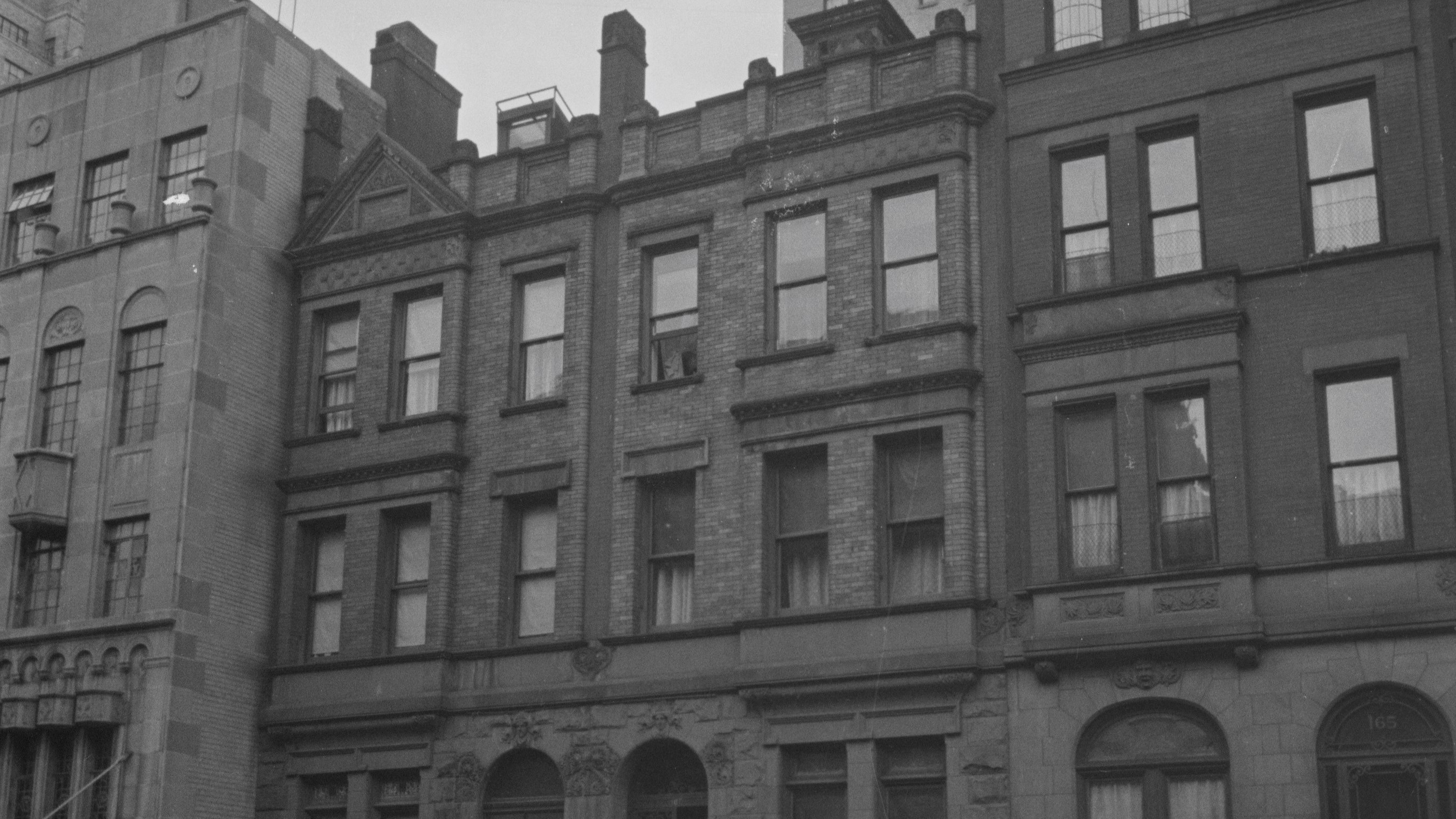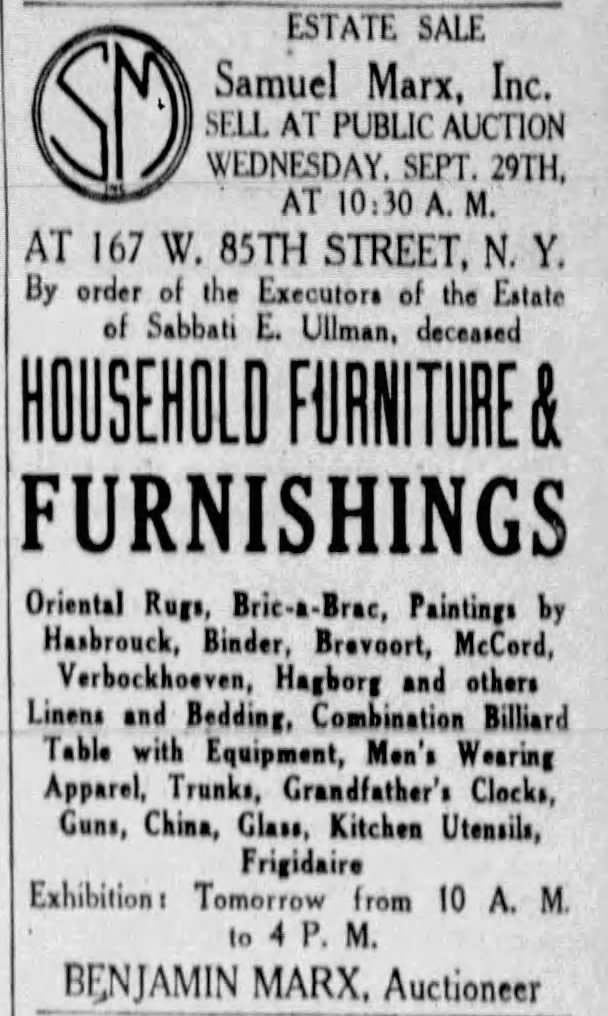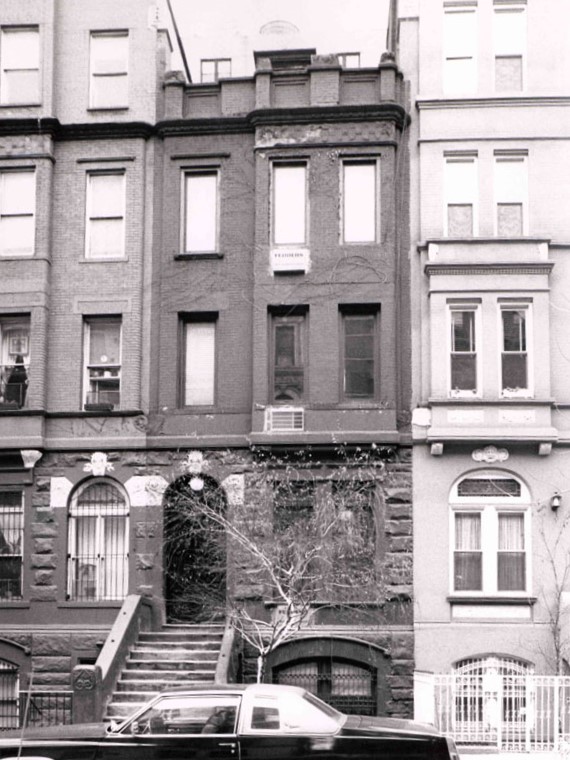
167 West 85th Street
by Megan Fitzpatrick
On the old Upper West Side, fruitful relationships between land-owning speculators, developers, and architects resulted in the rows of eclectic dwellings we know today. Sometimes, builders served as their own architect, as was true with John G. Prague. Prague designed multiple dwellings in the neighborhood, constructing large flats on the avenues anchoring the side street blocks of his rowhouses, particularly apparent on West 85th and 87th Streets.
Prague established himself as an architect in New York City as early as 1867 and capitalized on the construction boom of Upper Manhattan that occurred in the 1880s. In 1889, he designed quite a few buildings, like the Brockholst on the corner of Columbus Avenue and West 85th Street but also a peculiar and quaint row that now sits on West 85th Street on the fringes of the Upper West Side/Central Park West Historic District. Prague’s practice was mainly residential with styles varying from Italianate to neo-Grec and Queen Anne, but this row of four highlighted his graceful execution of the Romanesque Revival style. Each property was three stories in height with a basement, made of brick with a brownstone finish at the basement and parlor floors.
Ullman was a successful doctor and made many medical strides in his field, having patented an invention of “a certain new and useful” development in peptones
The architect’s original intent for the row can still be seen in its initial building, No. 167 West 85th Street. It has a straightforward expression but with some ornamental elements, particularly a checkered pattern on the lintel of the upper window and a woman’s face with Medusa-like hair above the doorway.
In August 1890, Prague sold his property on West 85th Street to Sabbati E. Ullman, a doctor from Albany. Ullman, originally from Tennessee, studied medicine at the Albany Medical College in New York. A first-generation German-American, he graduated in 1880 at the age of 24, with a wife, Mary “Lizzie” Ullman, and a 3-year-old daughter, Dorothy.
The family made the big move to the city a decade later and settled down on the Upper West Side. Ullman was a successful doctor and made many medical strides in his field, having patented an invention of “a certain new and useful” development in peptones or “peptone-pepsin composed of the peptonized albumen of blood-serum,” as stated in his patent document approved in 1889.
The Ullman family lived together on West 85th Street for about 30 years until Sabbati and Lizzie divorced. Just before 1920, Lizzie and her daughter Dorothy, who became a widow not long before, moved downtown to a residence on Spring Street. Sabbati remained at 167 West 85th Street until he died in 1937. On September 27, 1937, the Brooklyn Eagle announced that an estate sale for Ullman was held at his former home and the auction included various household items. Among his prized possessions were many paintings he owned by renowned artists such as Hasbrouck, Binder, Brevoort, McCord, Verbockhoeven, Hagborg, and others.
As was common in the mid-20th century, this once single-family home was sold and converted into multiple apartments or a rooming house, as it was known. In 1940, nine families rented rooms in this dwelling, many of them immigrants from Northern Europe. A decade later records reveal more immigrant families moved into 167 West 85th Street. Jerry Bleeker, a 69-year-old widower, operated the rooming house from his basement unit. Above him were Jose A. Irizarry, a ”Toy Stuffer” from Puerto Rico, and Richard Ramos, a “Rum Rectifier” from Cuba. A brother and sister from Haiti, Raymond and Luciene Hogath lived together on the third floor of the building. In the census records, Luciene noted her employment as “Makes pockets for clothing at a factory.” The rowhouse remains a multi-family building today.
A decade later, records reveal more immigrant families moved into 167 West 85th Street
In 1933, one of the buildings in Prague’s row, No. 171, was demolished and a five-story purpose-built funeral home was erected in its place. Of his original Romanesque Revival row, No. 167 is the only building that remains much the same since 1889, as No. 169 and 173 both received an extra floor and erased historic roofline.
Megan Fitzpatrick is the Director of Preservation and Research at Landmark West!




